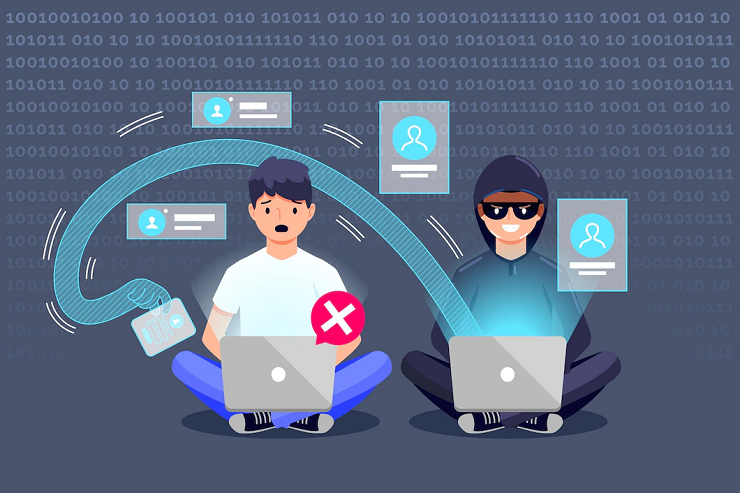
Ransomware has become the most common type of cybercrime in recent years, posing a rising risk to businesses. Ransomware has affected the vast majority of organizations. Ransomware, a sort of malware designed to steal money from victims, and phishing, the primary distribution method for ransomware and other malware, are serious concerns that every firm must address in various ways. Businesses are becoming common targets for ransomware, a type of virus. Cybercriminals use ransomware to lock your computer or mobile device, steal your data, and demand a “ransom” payment ranging from a few hundred to thousands of dollars. Ransomware infiltrates company networks and servers, as well as individual laptops or desktops, resulting in the loss of crucial data and data. The good news is that businesses can do a lot to become more resilient in the face of such difficulties and gain cyber protection.
What Is Ransomware?
Ransomware is a complex piece of software that may infect a computer and hold sensitive data or personally identifiable information (PII) hostage until a fee, or “ransom,” is paid. To restrict data access, cybercriminals typically use a binary encryption key to extract money from victims. Ransomware attacks may be extremely devastating to businesses, hospitals, schools, and other organizations that rely on such data daily. In most cases, failure to pay the ransom may result in the permanent loss or exposure of personal data.
The following are some of the most common ways for people to become infected with ransomware:
- Email forgery
- Visiting shady websites
- Downloading potentially hazardous file extensions or attachments
- RDP attacks on system vulnerabilities and network vulnerabilities

How To Protect Business Against Ransomware?
As more ransomware scams emerge, the more information you’ll need to protect yourself from these cyber-attacks. Here are five effective strategies for avoiding ransomware attacks.
1. Keep Your Electronics Up To Date
Cybercriminals take advantage of known faults in your devices. Updates offer security updates, ensuring that known flaws cannot be exploited against you. You should continually update your system and programs as requested. You may also activate automatic updates on various devices and applications, which allows changes to take place without your interaction. If you have a server or NAS device on your network, make sure it is updated regularly as well. If you need assistance updating your NAS, go to the manufacturer’s instructions or an IT professional.
2. When Opening Files And Downloading Applications, Proceed With Caution
You may need to open a file or download an application from the internet. Open files that you have received unexpectedly or from people you do not know. For example, if the email address is unfamiliar to you or you were not expecting to get it, do not open the attachment. Do not download if the file extension changes from what you expected. Before downloading and installing software on your device, make sure it was created by a reputable company. Avoid software that asks for unusually broad or questionable permissions.

3. MFA (Multiple Factors Authentication)
MFA is a simple technological barrier that adds several layers of verification. In addition to the login and password, for example, entering an OTP sent to a registered cellphone number, a physical token, biometrics, and so on. This prevents phishers from getting unauthorized access through the use of compromised credentials. MFA often requires a combination of two or more of the following authentication methods before granting account access:
- Something the consumer is aware of (PIN, password),
- Something the user holds (smartcard, physical token)
- Something the consumer is aware of (fingerprint, iris scan).
4. Avoid Clicking Links That Ask You To Log In Or Reset Your Password
You may receive a link from time to time requesting you to enter your credentials or reset your password. Do not enter your credentials after receiving instructions from an unexpected notification. This might be a phishing attempt to steal your login credentials. If you feel the communication is genuine, find another way to reply. For example, if you need to change your account password, go to the official website and request a password reset. Use caution when clicking on links provided in an unexpected email or message, since they may be false, and you can prevent malware online.
You Can Also Read “Password Security: Top Password Security Tips You Must Know“.

5. Utilize Anti-Virus Software
Anti-virus software can help you avoid, detect, and remove ransomware from your computer. Check that your antivirus program is activated and up to date. Your device may potentially have an antivirus application installed. Windows Security is an antivirus application that comes standard with Microsoft Windows 10 and Windows 11. We recommend that you become familiar with the look of genuine alerts in whichever anti-virus software you use. Websites may show a fictitious warning to persuade you to click on a harmful link. If you know what your anti-virus notifications look like, you can avoid risky URLs and avoid Ransomeware.
Conclusion:
Cyber risk is no longer only a technology issue; it has grown into a systemic danger for businesses and society that must be actively managed. Because of significant expansion in remote labor, supply chain interconnectedness, digitalization expectations, and key infrastructure deficiencies, organizations are more susceptible than ever. To thrive, they must go from protection to resilience. Cyber assaults like ransomware affect every industry. Today, every firm, large or small, is grappling with cyber risk. There is no one-size-fits-all answer, either: new digital transformation technologies expand the attack surface available to hackers. Please follow the steps mentioned above to prevent Ransomeware to avoid cybercrime.
